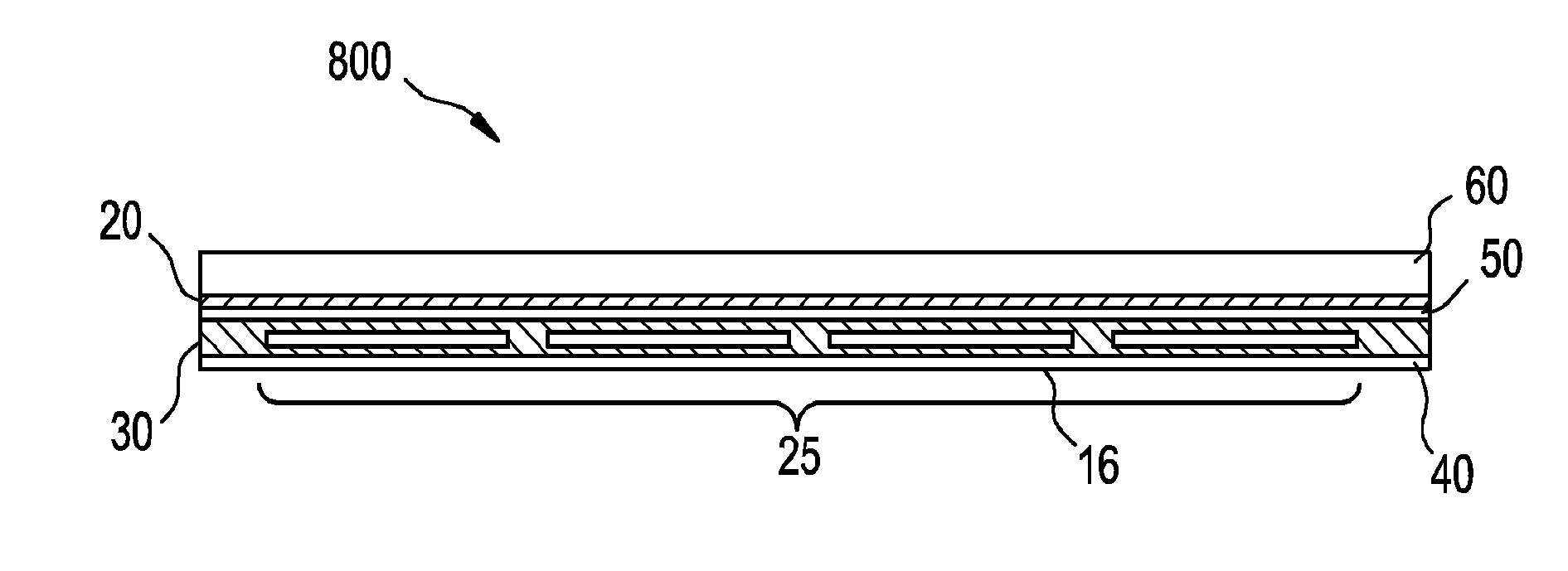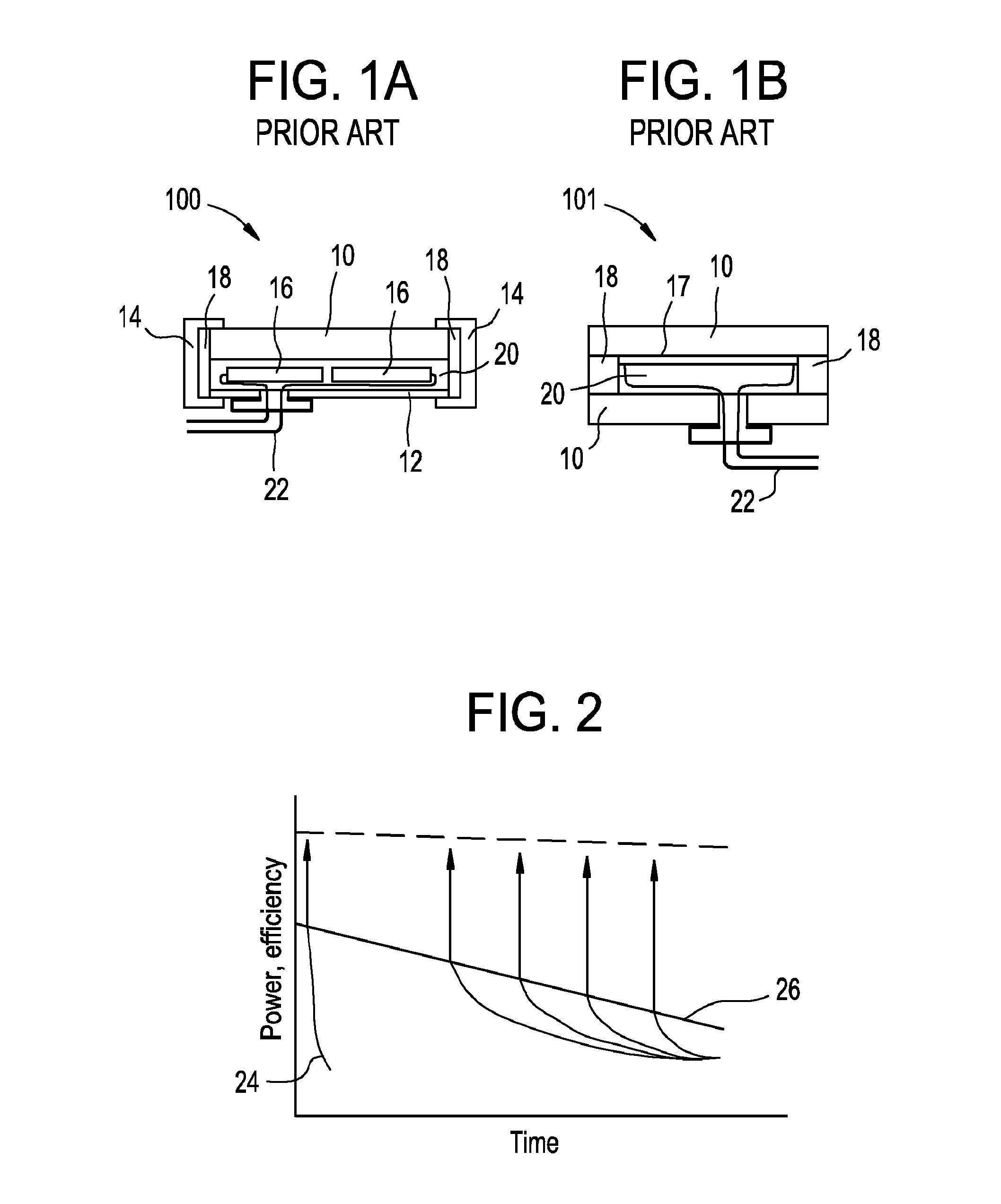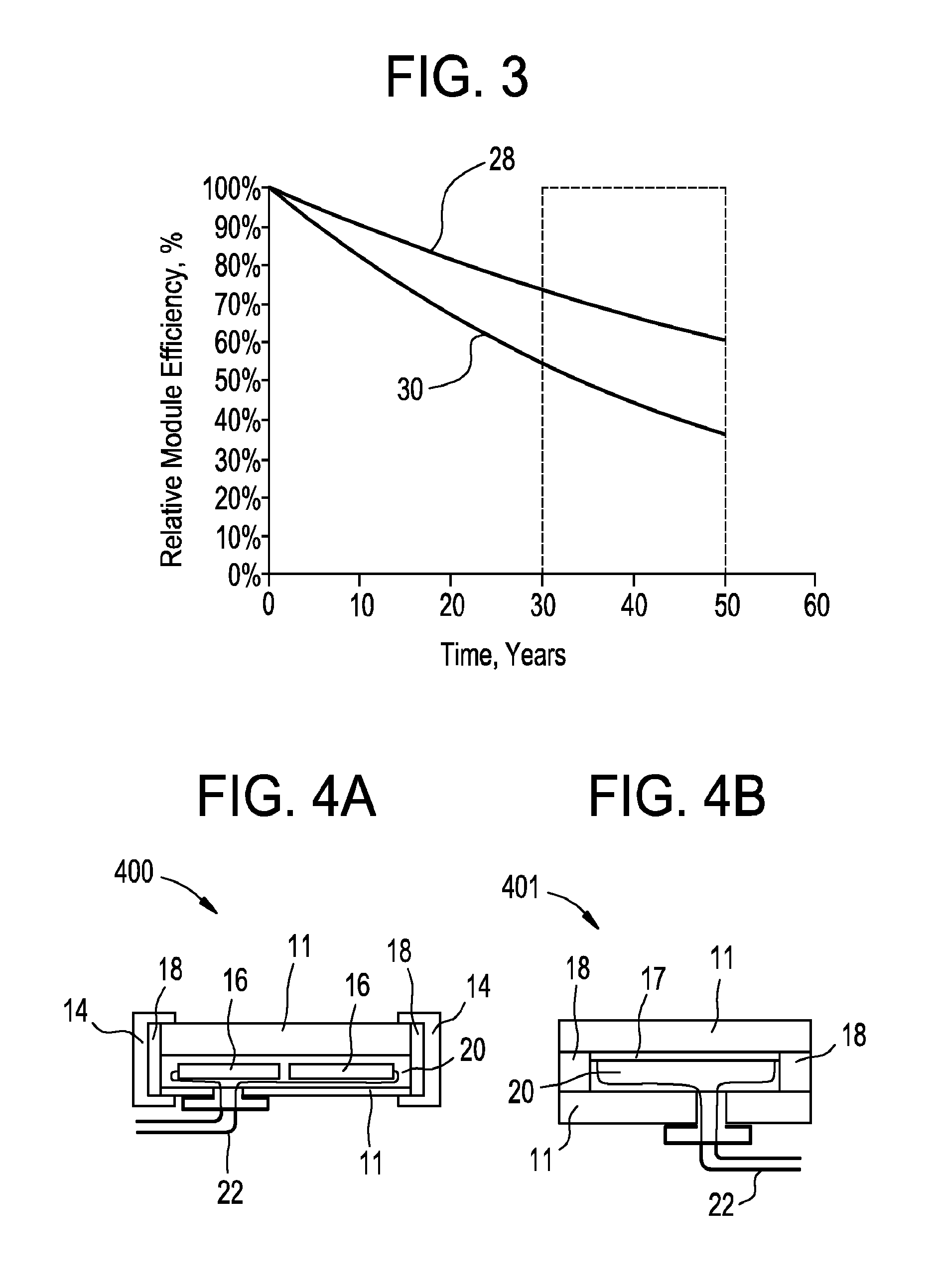Photovoltaic module package
- Summary
- Abstract
- Description
- Claims
- Application Information
AI Technical Summary
Benefits of technology
Problems solved by technology
Method used
Image
Examples
example 1
[0122]Conduction of electrical charge in glass is primarily due to ions in response to an applied voltage. The volume conductivity (which is the inverse of the resistivity) of glass as shown in FIG. 11 is obtained using established sample preparation protocols and measurement techniques. The glass samples under test are prepared as described in ASTM D257, where flat samples are finished to a defined area and thickness before gold electrodes are fired on opposite flat surfaces to form a parallel-plate capacitor. Electrical connections are then made to the sample and placed in a furnace as described by ASTM C657. The impedance of the parallel-plate electrode sample is measured using an impedance spectrum analyzer and the conductivity is calculated using the following two descriptions for resisitivity ρ (Ω·cm): (1) ρ=R·(A / t), where R=is the resistance (Ω) and A and t are the effective area and thickness of the sample, respectively; and (2) ρ=ρ0·e(−EA / kBT) where ρ0 is the pre-exponentia...
example 2
[0123]The Wet leakage test is performed at +600 V and stabilized for 2 minutes per the IEC 61215 measurement guidelines. The minimum measurement requirement for modules is 40 Mohm*m2.
TABLE 1MΩ· m2MaxMinAvgSLG front sheet / 109.8982.1488.12polymer back sheetComp. 106 / 10674740.007437.0034332.64
Wherein “SLG” is a standard soda lime glass front sheet and the back sheet comprised a Tedlar polymer. From our measurements, a soda lime glass (SLG) / polymer package passes the IEC requirement. The embodied PV module package comprises front and back sheet glass sheet compositions of composition 106 (TABLE 3). The embodied PV module package passes with >3 orders of magnitude better margin in performance. The higher resistance from the embodied PV package is in part attributed to the >3 orders of magnitude higher resistivity of the 106 glass versus SLG.
example 3
[0124]Potential induced degradation (“PID”) is tested via the Damp-heat test on a number of photovoltaic modules to compare the reliability, performance, and stability of the embodiments. Standard c-Si module design is used, with all devices comprising components from either Construction 1 or Construction 2 (See TABLE 4). The modules all comprise c-Si cells, encapsulant coating, front and back sheet components, a framing gasket, an extruded aluminum frame, junction box and junction box adhesive.
TABLE 4Panel BOMConstruction 1Construction 2CellsSolarTechDelSolarMulti-CrystallineMono-CrystallineSiN ARC 15% to 17%SiN ARC 17% to 19%EncapsulantSTR EVA 15420STR EVA 15295Back sheetMadico Tedlar / PET / TedlarMadico Protekt HDProtekt / PET / EVAFrameExtruded AlExtruded AlFraming GasketSG V9000Dow Corning PV804Junction BoxTycoZJRHJunction BoxMomentive RTV108Dow Corning PV804Adhesive
[0125]Components from Construction list 1 are used to make five different PV modules—1) soda lime glass front sheet / poly...
PUM
| Property | Measurement | Unit |
|---|---|---|
| Temperature | aaaaa | aaaaa |
| Fraction | aaaaa | aaaaa |
| Time | aaaaa | aaaaa |
Abstract
Description
Claims
Application Information
 Login to View More
Login to View More - R&D
- Intellectual Property
- Life Sciences
- Materials
- Tech Scout
- Unparalleled Data Quality
- Higher Quality Content
- 60% Fewer Hallucinations
Browse by: Latest US Patents, China's latest patents, Technical Efficacy Thesaurus, Application Domain, Technology Topic, Popular Technical Reports.
© 2025 PatSnap. All rights reserved.Legal|Privacy policy|Modern Slavery Act Transparency Statement|Sitemap|About US| Contact US: help@patsnap.com



